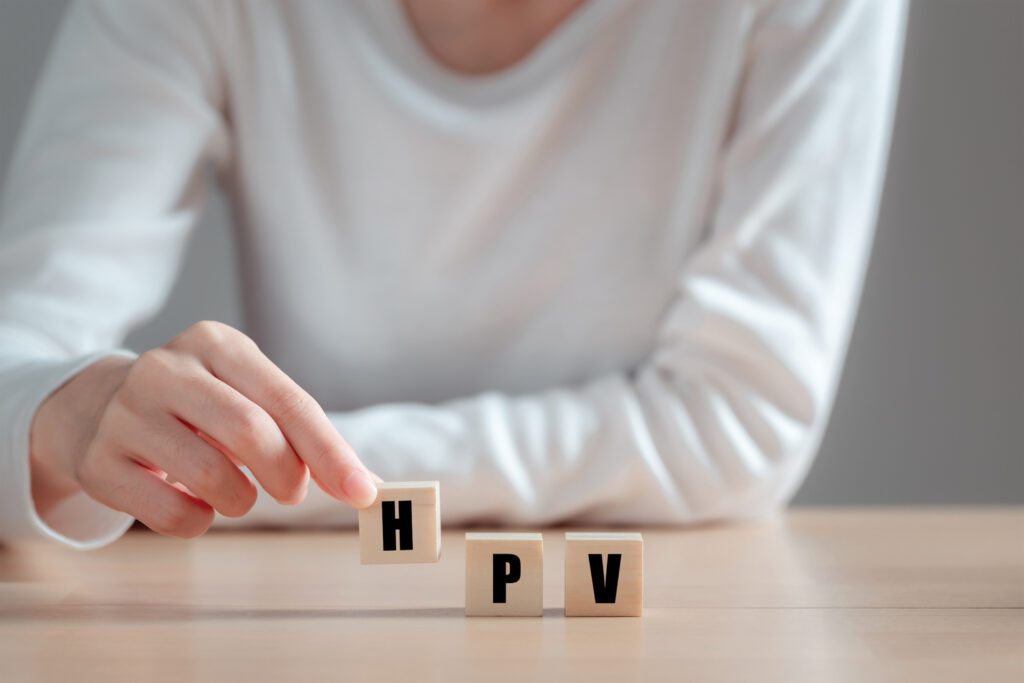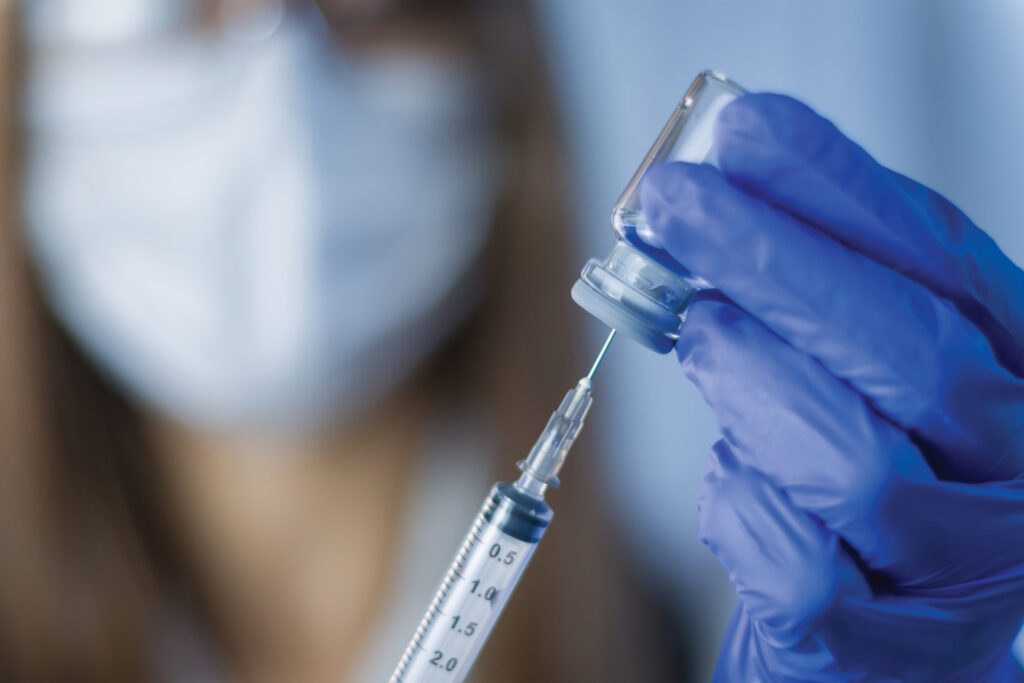Learn the Facts About HPV
It’s a quiet epidemic, often with no signs or symptoms to indicate infection. Here’s what physicians today have to say about human papillomavirus—the cancer risks, the vaccinations, and why it’s crucial we protect our youth.
What is HPV?
The most common sexually transmitted infection in the United States, human papillomavirus (HPV) is a strange kind of pathogen. “While your risk of contracting it is high, it’s likely you won’t even know you’re infected,” says Dr. Marcus Wagner, a radiation oncologist with Tennessee Oncology at CHI Memorial Hospital. And while it often clears up on its own within two to three years, it doesn’t always.
According to the Center for Disease Control, more than 150 virus strains can be categorized as HPV. Around 40 of those strains can infect the genital area and are transmitted through direct sexual activity or intimate skin-to-skin contact. “They are so common that most sexually-active men and women will be infected at some point in their lives,” says Dr. Lara Rabaa, a pediatrician with Tennova Primary Care. Statistics show likely 1 in 5 Americans has an active HPV infection right now. The scary part? “Persistent HPV infection can lead to not only anogenital warts, but also serious cancers in both men and women,” says Dr. Zara Memon, a pediatrician with the Chattanooga Children’s Clinic.


According to the National Cervical Cancer Coalition, approximately 80% of all women have been infected with some type of HPV by age 50. Nine out of 10 infections will clear up on their own. It’s the “persistent infections” that you should worry about, as they present a greater risk of cell abnormalities in the future."
In fact, HPV is responsible for virtually all cases of cervical cancer and anal cancer, and approximately 75% of vaginal cancers, 70% of oropharyngeal (throat) cancers, 50% of vulvar cancers, and 35% of penile cancers. Each year in the US, approximately 20,000 women and 11,000 men are diagnosed with cancers caused by HPV infections.
Specialists separate HPV into two different categories:
Low Risk (non-oncogenic) HPV: Can cause genital warts and (rarely) laryngeal papillomas (growths on the throat); and benign or low-grade cervical cell abnormalities
High Risk (oncogenic) HPV: Can cause cervical, vaginal, and vulvular cancers in women; penile cancers in men; and oropharyngeal (throat) and anal cancers in both men and women
Immunizing Adolescents



“The highest rates of infection are found within the first decade of starting sexual activity,” says Dr. Memon. Of the estimated 14 million new genital HPV infections each year in the United States, half are in 15- to 24-year olds. Consequently, the HPV series has been added to the list of four vaccines recommended by the American Council on Immunization Practices for adolescents
ages 11-18:
TDap booster—protects against tetanus, diphtheria, and pertussis
Meningococcal booster—protects against meningitis and sepsis
Annual influenza—protects against annual flu
HPV vaccine series
Because HPV can be so difficult to detect—often with no obvious symptoms until it’s too late—it is important for young girls and boys to receive early protection against the virus. “The immune system of an 11-12 year-old responds better to the vaccine than that of an older teen,” explains Dr. Rabaa. “Additionally,” she notes, “the vaccine must be initiated before being exposed to HPV by sexual activity.”
Three HPV vaccines are licensed for use in the United States: Gardasil, Gardasil 9, and Cervarix. The Advisory Committee on Immunization Practices (ACIP) recommends routine vaccination against HPV at age 11 or 12, though the vaccination is approved for females up to age 26, and males up to age 21. Girls and boys who begin the series between the ages of 9 to 14 receive a two-dose schedule, and those who begin the series between the ages of 15 to 26—and anyone who is immunocompromised—receive a three-dose schedule.
Reaching Herd Immunity
From 2014 to 2015, the number of 13- to 17-year-old adolescents who had been protected against HPV-associated cancers with at least one vaccine dose rose from 60 to 62.8% for females and 41.7 to 49.8% for males. Rates for individuals who received three or more vaccine doses rose from 39.7 to 41.9% and 21.6 to 28.1%, respectively. While this rise in vaccination rates is a step in the right direction, there is still room for improvement.
Physicians agree that the risk of infection with any disease—be it measles, pertussis, or the flu—declines with the “presence and proximity” of those who are immune, i.e. vaccinated. The “critical vaccination level” is the percentage of the population that needs to be vaccinated to reach a threshold at which rapid transmission is no longer an issue.
The Healthy People 2020 goal, set by the Office of Disease Prevention and Health Promotion, strives for 80% of the qualifying population to complete vaccination against HPV. Unfortunately, numbers remain far below the goal. In Tennessee, for example, only 35.4% of girls ages 13 to 15 had received the recommended doses of HPV vaccine in 2015. (The percentage for boys was undefined.)
Facts and Misconceptions
So why are HPV vaccination rates – both statewide and nationwide – so low in comparison to the other recommended youth vaccination series?
- The original vaccine (in 2006) was only approved for girls. According to Dr. Wagner, “The reason it was first approved for girls is because cervical cancer is one of the most prominent female cancers, and was therefore easy to study. Newer studies are expected to show a similar effectiveness in men.” However, the stigma that females need protection more than males remains today. The findings from a national survey published in Cancer Epidemiology, Biomarkers & Prevention revealed that while 74% of physicians strongly endorsed the vaccine for girls, only 61% strongly endorsed it for boys.
- Only three state jurisdictions currently require students to receive the HPV vaccine by seventh grade. According to the National Conference of State Legislatures, as of March 2017, at least eight states have proposed HPV-related legislation for the 2017-2018 sessions, but most focus on minor consent, pharmacy administration, or funding—not mandates for school attendance. “Often people think that because it is not mandatory, it is not as important,” says Dr. Memon.
- Some believe the vaccine will encourage sexual activity. “Parents may be concerned that vaccinating may be perceived by the child as permission to have sex,” says Dr. Rabaa. The journal Pediatrics tackled this misconception head-on in 2012 with the study “Sexual Activity-Related Outcomes after Human Papillomavirus Vaccination of 11- to 12-Year-Olds.” The conclusion: data collected on pregnancy, STD infections, and/or contraceptive counseling for up to three years after the vaccination showed no link to initiating sexual activity at a young age.
Even When Vaccinated, Don’t Skip Screenings
Approximately 10% of cervical cancers and 25% of vaginal cancers are not caused by HPV. Females who are vaccinated should still be vigilant to schedule regular gynecological visits and pap tests throughout adulthood.
What’s Right For Your Family?
“The HPV vaccine is like a safety belt,” says Dr. Wagner. “When you place your child in the car, you buckle them up hoping the drive will be accident free, but feeling safe that, if there is an accident, the safety belt is there to protect them. The same can be said for the vaccine. Accidents happen, so it’s best to have this protection in place, just in case.”
Of course, educating your child on sexual health and making vaccination decisions is a private and personal experience. Stay informed and talk to your child’s doctor to determine what is right for them.



Dr. Lara Rabaa
Pediatrician, Tennova Primary Care - Ooltewah



Dr. Zara Memon
Pediatrician, Chattanooga Children’s Clinic



Dr. Marcus Wagner
Radiation Oncologist, Tennessee Oncology at CHI Memorial

